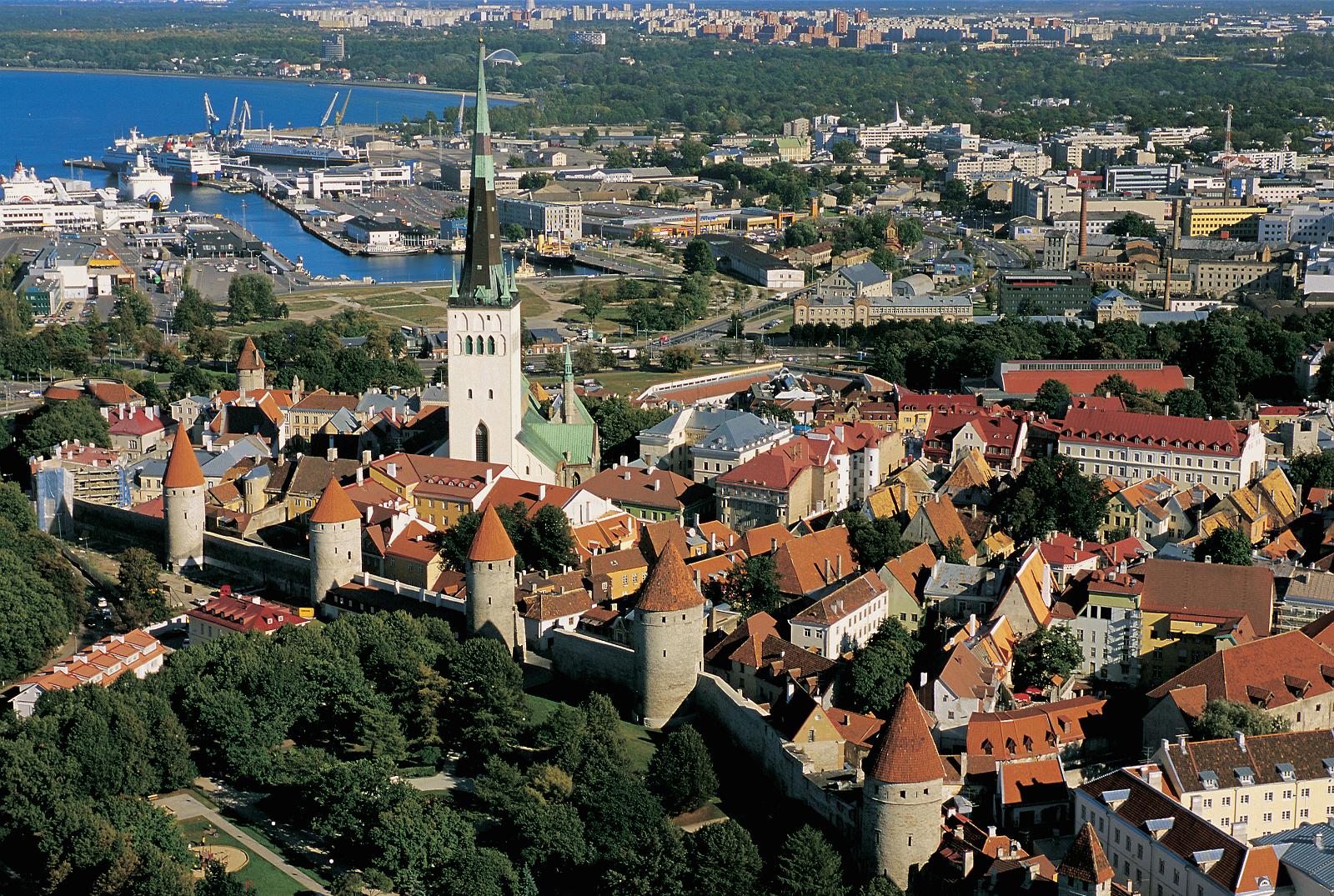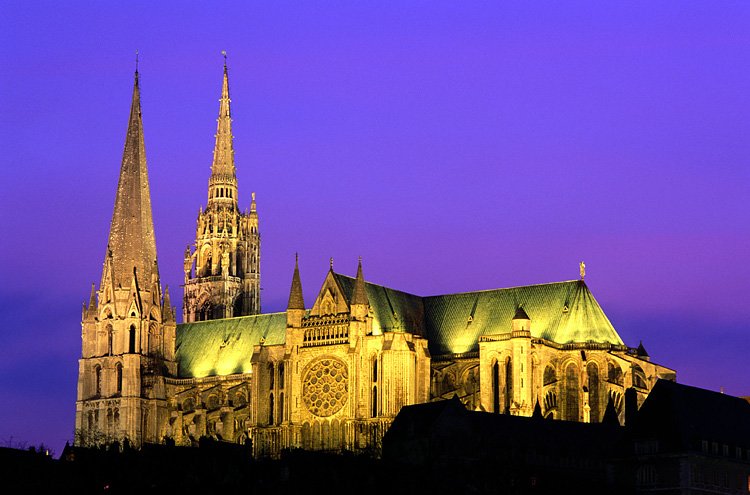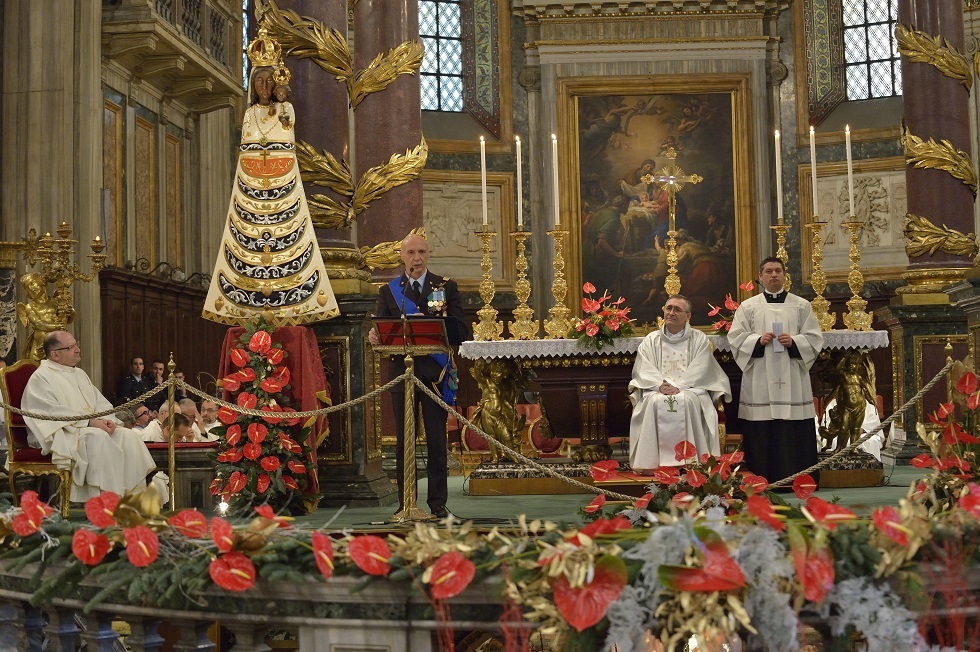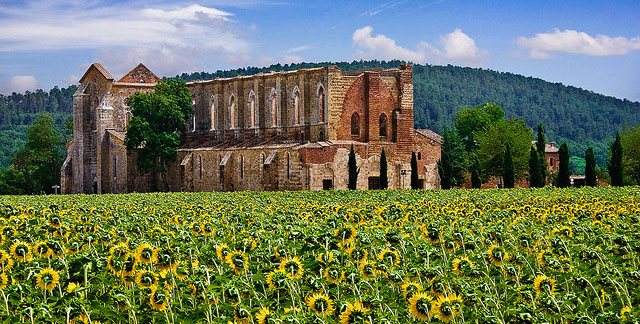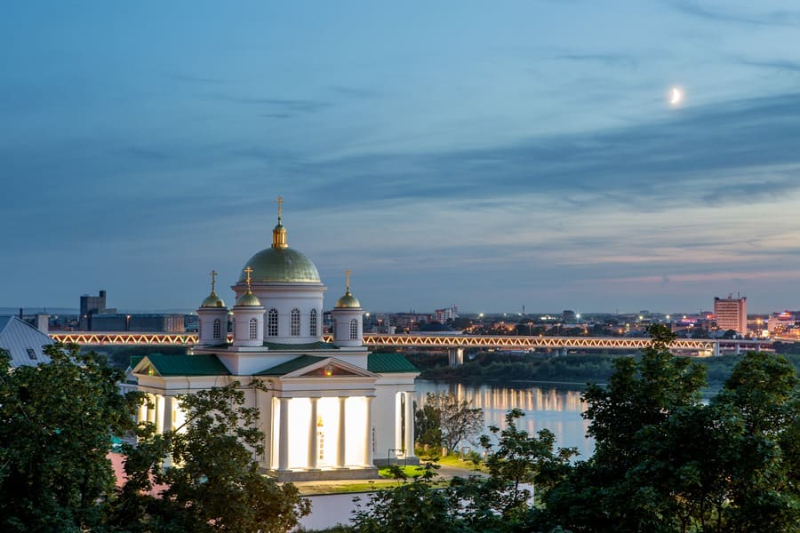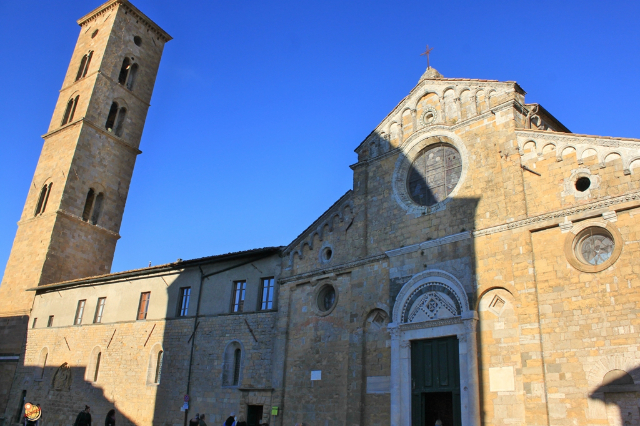It rests on the slopes of Mount Consolin; the facades of the little church, which is more or less square in shape with the side about seven meters long, are covered with bands of red clay bricks, interlined in the joints by mortar. To the left of the entrance door, and at the very end of the front wall, one can see a hollow, left as it was found, as early as 1914, which was probably a tomb, given as well that, the Perpetual Vicar who ruled the Catholic, demanded the jus sepulturae in said Church but, we recall, also in all the territory under the Royal State Property and therefore part of the universitas.
Towering above the Church are five cylindrical domes covered with tiles arranged in a rhombus shape and broken in the center by similar bricks placed in a "sawtooth" pattern, allowing them to break the coldness of the underlying cubic mass. The roof and domes are covered with reddish-yellow tiles while it should be noted that the domes were once covered with lead sheets. Also missing are the marble steps of the front door, which were made from the remains of classical columns or from the same age as the church.
In each of the two front domes, set slightly lower than the rear ones, two small single-lancet windows open; on the rear ones only one opens. The central dome, longer in diameter and located higher than the perimeter ones, has four small windows with two openings (mullioned windows) divided by crude small columns. To the right of the church, for those entering, are the apses, which rest on a stone wall base; to the left, a well-delineated wall, almost protecting the temple. The entrance door is surmounted by a wooden lintel, resting in its jambs. Above the lintel is a round arch framed by indentations of terracotta bricks. Directly on a brick of the left jamb is an inscription engraved in Greek letters (perhaps the name of one of the builders or an indication of an indention). Inside, from the red clay square floor rise four columns, two in cipollino, one in lunense and one in granite, supporting the ceiling vaults; they divide the interior into nine equal squares, excluding the recess of the three apses.
On the shaft of the first column to the right is carved a cross, surrounded by an inscription in Greek and which, translated, reads, "God the Lord appeared to us," a verse taken from the psalm celebrating the Epiphany or Apparition. The remaining three columns each have a different form: the first on the left (on the shaft of which there appear to be engraved traces of inscriptions in Arabic letters), stands on an inverted Corinthian capital, while the one further along rests on a Doric capital. These four columns are thought to have come from ancient and different monuments that once existed in the Kaulonite territory and were brought to the present dwelling, according to a curious legend, by "four young local women, who during the steep ascent of the mountain spun quietly, singing, without warning, almost, their very heavy pond." Of the three apses (prothesys, bema and diakonikon) located to the east of the church, the central one received the small altar. Opposite the entrance door, on the north wall, is a wide opening, perhaps also an ancient tomb or more likely the ancient access of the monks who inhabited the hermit caves existing all along the ridge of the mountain behind the small church. Of exceptional value are the frescoes that the Cattolica preserves. Certainly it was Paolo Orsi, the Trentino archaeologist, when he stated, as a result of his wise field investigations, that "the little church at its origin was covered with a general plaster with partial decoration, limited to the apses, of large images of saints; but it did not have a vast complex and organic decoration, limited instead, originally to a few panels, to which others were added in later times.
More than half a century after these conclusions, confirming the validity of what the well-known archaeologist said, the excellent restoration completed in 1981 has borne fruit in the field of discovery. Thus, over the centuries, it turned out, among other things, that as many as five layers of frescoes were superimposed on the walls of the small temple, characteristic of different eras but all demonstrating high artistic value.
The western wall shows an image of the Virgin seated on a throne and wrapped in a broad blue cloak adorned with lilies. Further to the left of this, the figure of the Angel of the Annunciation, a fresco partially reconstructed in the part of the face and wings, is graceful. Completely brought to light is the icon depicting a "Dormitio Virginis" from the 14th or 15th century, and which is in the center of the same wall. But it is on the apses that the best frescoes are preserved. On the pillar of the wall of the central apse there is a depiction of a saint, perhaps St. Nicholas; on the left side of the same apse, is shown a severe image of St. Basil, with a long beard, dressed in pontifical vestments; and here, on the right side, is the richest figure in the entire temple: St. John Chrysostom. Looking astonished, he has his neck encircled by a four-cornered scarf with large black crosses and is covered by a long white surplice. The striking effigy of St. John the Forerunner adorns the Midday apsidiole. Wrapped in a wide mantle he holds in his left hand an ornate book closed with clasps, while with his right hand he blesses. The north apse depicts the image of a saint, white-faced, her forehead encircled with a royal diadem, wrapped in a red tunic covered with a white mantle.
On another part of the plasterwork, there is also frescoed an inscription in Gothic characters probably from the 1300s. Finally, at the central apse, the figure of Christ appears from the barrel vault, amid round ornaments with the effigy of the Apostles and again among four seraphim with spread wings, blessing as he ascends into heaven.


